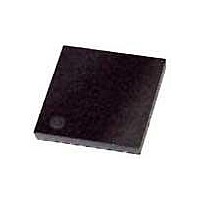ATA5823-PLQW Atmel, ATA5823-PLQW Datasheet - Page 14

ATA5823-PLQW
Manufacturer Part Number
ATA5823-PLQW
Description
RF Transceiver RF DATA CONTROL Duplex Transceiver
Manufacturer
Atmel
Datasheet
1.ATA5824-PLQW.pdf
(98 pages)
Specifications of ATA5823-PLQW
Operating Supply Voltage
2.5 V, 3.3 V
Mounting Style
SMD/SMT
Package / Case
QFN-48 EP
Minimum Operating Temperature
- 40 C
Operating Temperature (min)
-40C
Operating Temperature (max)
105C
Operating Temperature Classification
Industrial
Product Depth (mm)
7mm
Product Height (mm)
0.9mm
Product Length (mm)
7mm
Operating Supply Voltage (typ)
2.5/3.3V
Operating Supply Voltage (max)
3.6V
Lead Free Status / RoHS Status
Lead free / RoHS Compliant
Available stocks
Company
Part Number
Manufacturer
Quantity
Price
Company:
Part Number:
ATA5823-PLQW
Manufacturer:
ATMEL
Quantity:
900
Part Number:
ATA5823-PLQW
Manufacturer:
ATMEL/爱特梅尔
Quantity:
20 000
7.6
7.7
14
RX Supply Current versus Temperature and Supply Voltage
Blocking, Selectivity
ATA5823/ATA5824
For the transceiver in the car a tolerance of ±75 kHz
remains. The needed frequency stability of the used crystals overtemperature and aging is
±52.5 ppm
±40 ppm for the temperature dependency of the crystal frequency in the car.
Since the transceiver in the car is able to receive these TPM transmitter signals with high fre-
quency offsets, the component specification in the key can be largely relaxed.
This system calculation is based on worst case tolerances of all the components, this leads in
practice to a system with margin.
For a 315 MHz TPM system using a TPM transmitter ATA5756 and a transceiver ATA5823 as
receiver the same calculation must be done, but since the RF frequency is lower, every ppm of
crystal tolerances results in less frequency offset and either the system can have higher toler-
ances or a higher margin there.
For 868 MHz it is not possible to use the transceiver ATA5824 in a combined RKE/PEG and
TPM system since all the tolerances double because of the higher RF frequency.
Table 7-5
supply voltage and temperature with V
V
tery lifetime within a key fob application because this is also the operation point where a lithium
cell has the worst performance. The typical supply current at 315 MHz or 868.3 MHz in RX mode
is about the same as for 433.92 MHz.
Table 7-5.
As can be seen in
s i g n a l s 3 d B h i g h e r t h a n t h e s e n s i t i v i t y l e v e l i n p r e s e n c e o f l a r g e b l o c k e r s o f
–
Figure 7-3
7-5 on page 15
f u l s i g n a l o f 4 3 3 . 9 2 M H z / F S K / 2 0 K b i t / s / ± 1 9 . 5 k H z / M a n c h e s t e r w i t h a l e v e l o f
–
how much a continuous wave signal can be larger than
10
1 MHz, for example, the blocker can be 58 dBC higher than
+58 dBC =
mance, avoid the additional need of a SAW filter in the key fob application.
44.5 dBm/-36.0 dBm with small frequency offsets of ±1 ±10 MHz.
105.5 dBm + 3 dB =
S
-3
= 2.15V and T
. The measurements were done at the 50 input according to
V
T
T
T
S
amb
amb
amb
= V
shows the typical supply current at 433.92 MHz of the transceiver in RX mode versus
=
=
and
=
S1
–
–
–40°C
105°C
44.5 dBm. These blocking figures, together with the good intermodulation perfor-
25°C
±2.5 ppm = ±50 ppm. The aging of such a crystal is ±10 ppm leaving reasonable
= V
Measured 433.92 MHz Receive Supply Current in FSK mode
Figure 7-4 on page 15
the wide-band blocking characteristic. The measurements were done with a use-
S2
amb =
Figure
–
–
102.5 dBm which is 3 dB above the sensitivity level. The figures show by
40°C is less than at V
7-3,
Figure 7-4
11.2 mA
8.2 mA
9.7 mA
2.15V
shows the close-in and narrow-band blocking and
S
and
= V
S
S1
Figure 7-5 on page
= 3V/T
= V
S2
amb
. As can be seen the supply current at
–
–
10.3 mA
11.9 mA
8.8 mA
102.5 dBm until the BER is higher than
3.0V
±52.2 kHz = ±22.8 kHz (±52.5 ppm)
= 25° which helps to enlarge the bat-
–
102.5 dBm which is
15, the receiver can receive
Figure 7-1 on page 11
10.8 mA
12.4 mA
9.2 mA
3.6V
4829D–RKE–06/06
–
102.5 dBm
Figure
At















